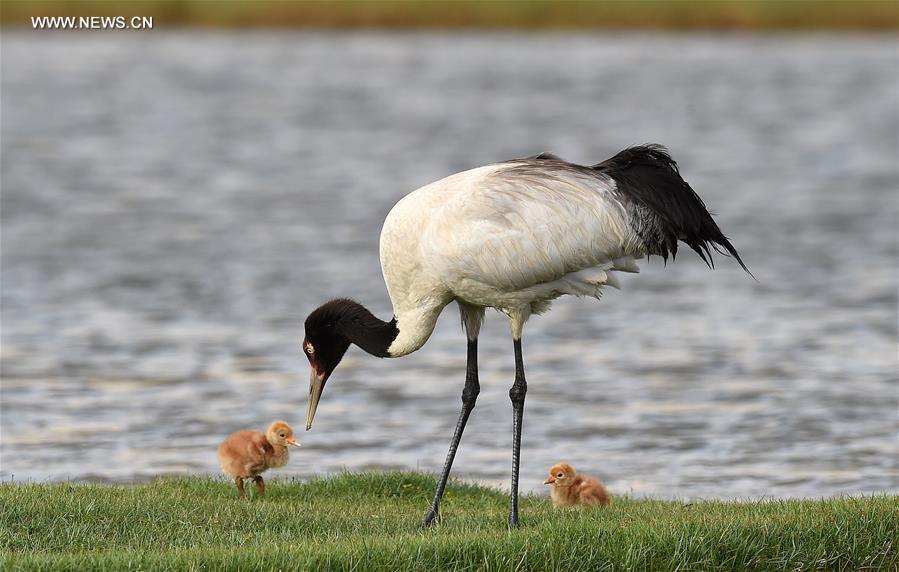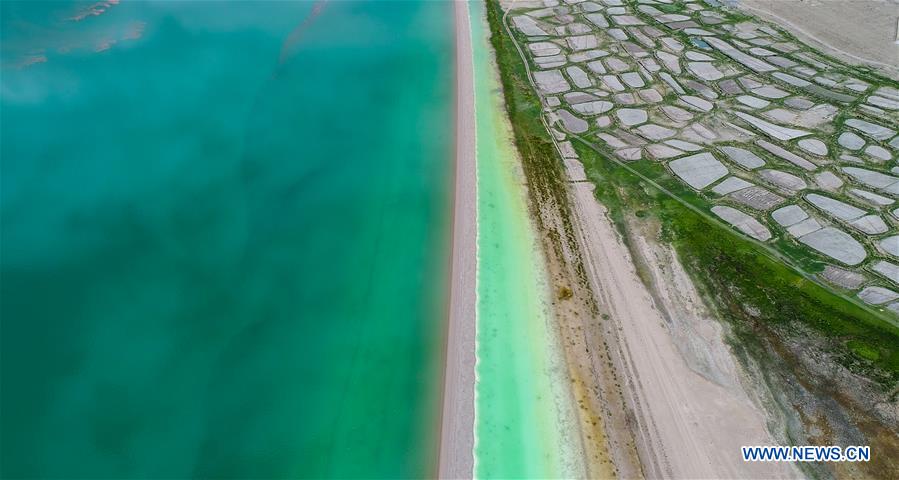A greener plateau brings bird back to the trees
A fine fowl perches on a fine tree, as the old Chinese saying goes, but in Nagqu prefecture in the northern part of Tibet Autonomous Region, there are simply no trees, fine or otherwise.
Located about 4,500 meters above sea level, Nagqu has thin air, a dry climate and sandy soil, with no naturally grown trees.
"Trees are a rarity here, so birds usually nest on the ground with the rats and rabbits," said Sumje Tashi, Communist Party Secretary of Nagqu.
This year though, Sumje was delighted to find a sparrow's nest in a young pine tree in the yard of the prefecture.
"Birds' nests are rather rare here. None of us had seen one for many years," Sumje said.
The local government has started planting more trees, inviting companies with strong green backgrounds like the Elion Group to help.
"For years, the people here have tried to plant trees and keep them alive, because they will help improve the harsh climate on the plateau," he said.
"In the 1980s, the government offered huge rewards for successful tree-planting techniques, but no one ever claimed the reward. Trees planted one year would all be dead in the next," Sumje remembered.
Nagqu built its first tree-planting base in 1998, growing juniper, spruce and poplar. In 2008, it built another small base to grow cypress and elm. Wooden boards protect them from the harsh winter.
There are five challenges for a tree to survive in Nagqu, said Sun Fuqiang, a technician with Elion, which planted over 200,0000 saplings in Nagqu.
It is hard for a tree to take root in the strong wind. Water and fertilizer disappear into the gravely soil. Tree trunks go dry in strong ultraviolet rays. Trees can succumb to frost and sudden drops of temperature during the night, Sun said.
"Seedlings grow extremely slowly in Nagqu. If a seedling has not yet lignified, or become woody, before mid-September, it may not survive the winter," Sun said.
Even if the saplings survive the first one or two years, it does not mean that they have taken root, Sun said, it takes much longer time to declare a tree has finally survived.
Sun and his colleagues are working in various ways to protect seedlings from the winter cold.
"In the future, we hope that anyone, not just me and my colleagues, will be able to grow trees on the plateau based on our experiences," he said.
Procedures such as soil improvement, wind protection, cold and freeze measures have greatly increased the cost of planting. In addition to finding ways to raise the survival rate, Sun and colleague Lhadung believed it is also necessary to bring down the cost, if widespread tree-planting is to happen in Nagqu.
Elion group installed monitoring facilities to watch the trees and stream data on climate, humidity and temperature to help technicians with their planting efforts.
Sun and his colleagues are questioned by skeptics who say there is no need for trees to grow in Nagqu.
"It is very difficult and tiring to plant trees in Nagqu. But we Tibetans believe it's always a charitable thing to do," said Lhadung.
"We also fully assess the impact of tree growing on the local ecology, so we are starting small-scale exploration first," he said.
Sun also said more trees could lead to a more amiable micro-climate that helps people to overcome altitude stress.
According to the local government, the tree planting efforts are currently limited to the yards of certain government departments and official institutions.
"Though Tibet is huge, Nagqu is my favorite place to be," said a local driver Basung. "If its micro-climate can be improved, I think more people would love to come and enjoy living here," he said.
Your Comment
Name E-mailRelated News
-
;
-
-

-
Environment of reserve improved for black-necked cranes in Tibet
Flocks of black-necked cranes fly to the Qiangtang nature reserve, southwest China's Tibet Autonomous Region to breed as the environment of reserve has been improved in recent years.
-
-
-

-
Scenery of Tangra Yumco Lake in China's Tibet
Tangra Yumco Lake is the deepest lake of Tibet with depth more than 210m.
-
Based in Lhasa, Tibet Vista is a Tibet travel agency that specialized in Tibet permit, and Tibet tours for both private and group travelers at a local price!
•4 Days Lhasa City Group Tour from USD 460 •8 Days Everest Base Camp Group Tour from USD 850 •15 Days Mt.Kailash Group Tour from USD 1780 •2016 Tibet Train Tours from Beijing, Shanghai, Chengdu, Xining,etc










